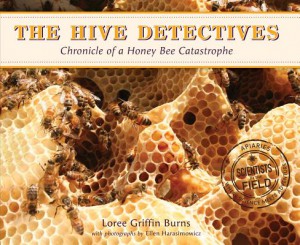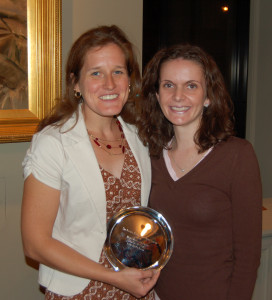If you are a children’s book writer or illustrator, and especially if you live in New England, you may like this bit of bee book trivia: What New England children’s book author/illustrator took the photo on the cover of THE HIVE DETECTIVES?
Answer: Jen O’Keefe!
It turns out that in addition to writing, illustrating, photographing, mothering, and volunteering, Jen keeps bees. (She is hiveless at the moment, but I get the feeling this is temporary.) When she found out I was writing a book about honey bees, she mentioned her hobby and sent me a few photographs. I knew the moment I saw the image above that it would make an amazing cover shot. It’s creepy and mysterious and aesthetically irresistible all at the same time.
The picture is of something called burr comb. Under normal conditions, honey bees shape their honeycomb into flat sheets. Under certain unusual conditions, however, the bees get a little loosey-goosey with their protocols. They’ll build honeycomb into spaces that were never meant to hold it—between hive boxes or inside syrup feeders, for example—and the shapes they come up with can be pretty funky. Several years ago, Jen fed one of her hives some leftover chunk honey (honey containing chunks of wax) inside a box-shaped feeder tray. She went on vacation for a few days and came back to a box-shaped tray full of burr comb. The photographer in her couldn’t resist:
“It was astonishing and gorgeous and I caught it in the nick of time, because [the bees] were grooming the comb for laying. I’ve still got the feeder in my art studio filled with the burr comb. It’s like a museum piece.”
Thank you, Jen, for sharing your talents with me, and for letting that unforgettable burr comb grace the cover of THE HIVE DETECTIVES.
















